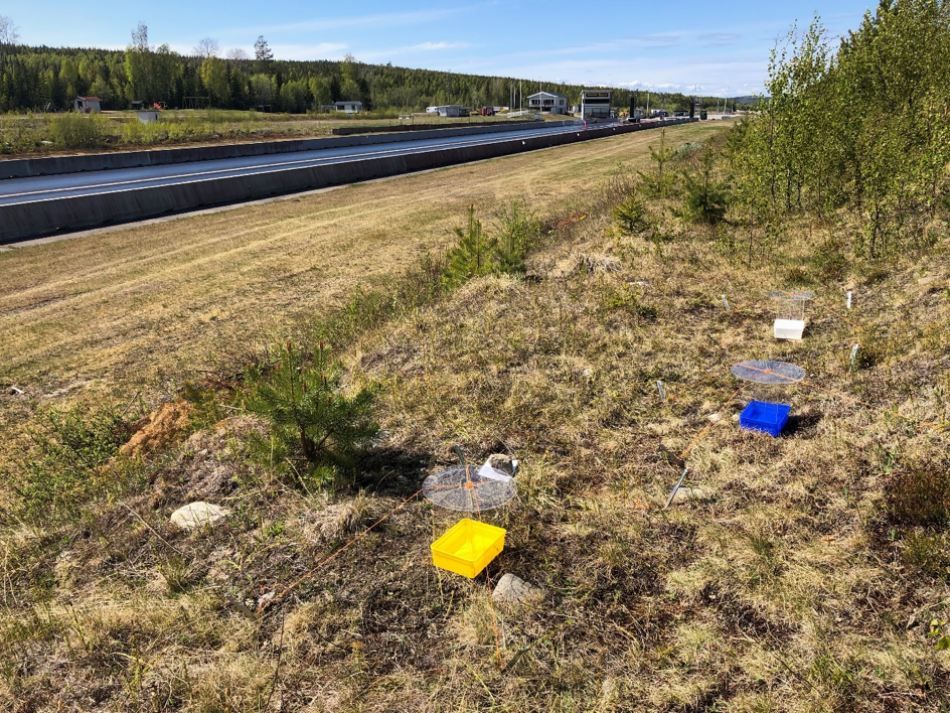SVENSKA BILSPORTFORBUNDET PUBLISHES REPORT SHOWING SWEDISH MOTOR SPORT ARENAS CONTRIBUTE TO THE CONSERVATION OF BIODIVERSITY
- Svenska Bilsportforbundet (SBF) publishes a report showing that motor sport arenas in the country play an important role in preserving biodiversity.
- Results of the insect inventory undertaken at three race tracks around Sweden show a high species richness with 390 species of insects found including five red-listed ones.
- Svenska Bilsportforbundet advocates for the adoption of dedicated management plans for all race tracks that identify the conservation measures allowing to maintain and develop biodiversity.

Protecting and increasing biodiversity is one of United Nations' top environmental goals in Agenda 2030 and one of the main challenges we are facing today. Svenska Bilsportforbundet’s report, which complementsprevious research finding similar positive results, proves that, when properly maintained, motor sport arenas can have a net positive impact on biodiversity and be considered as assets to preserve and develop ecosystems.
The inventory was undertaken during the summer and autumn of 2022 by Calluna AB at three race car tracks around Sweden — Annebergsbanan in Halland, Sundsvall Raceway in Medelpad and Höljes stadium in Värmland. It found out that race tracks offer a variety of habitat types where 390 species of insects were found, with five red-listed species.
Many of the species inventoried are associated with man-made environments and infrastructure biotopes as they need regular disturbance of their environment, open sand and good access to herbs growing on open sandy soils. Motor Sport arenas thus offer environments contributing to the preservation of pollinating insects and demanding species.
Most species encountered belong to the Hymenoptera insect order’s Aculeata subclade, which includes bumblebees, solitary bees and wasps. The presence of beetles, butterflies and flies was also investigated which allowed to increase the current knowledge on fauna at race car track locations.
The project was supported by the FIA Sport Grant Programme and selected as a finalist of the 2022 edition of the FIA President’s Climate Action Award.
FIA Deputy President for Sport Robert Reid said: “Supporting Svenska Bilsportforbundet’s project was key for the FIA. This knowledge-led initiative gives us a better understanding of how motor sport arenas can offer good conditions for maintaining biodiversity and lays the ground for the adoption of sustainable practices. We encourage more initiatives aiming to develop biological diversity around motor sport arenas.”
SBF Secretary General and FIA Vice President for Sport - Europe Anna Nordkvist said: “We are grateful that the FIA wanted to be part of this project. Environmental issues are high on most countries' agendas, and the fact that we can now show with research that motor sport arenas can help preserve biodiversity will be important to more countries than Sweden. In Sweden, we already see an increased interest in the results of this research in the dialogue with our government. And this work so clearly shows that our beloved sport is about so much more than just ‘who wins’.”
The report shows that wear and tear from spectators and vehicles can in many cases be controlled to act in moderation, favouring herbs and creating patches of soil and sand that favour insects. It also highlights that active management of vegetation can help increase biodiversity and provide a list of actions that can be implemented to develop biodiversity. The report also advocates for the generalised adoption of dedicated management plans for race tracks.
SBF Environmental Coordinator Mikael Norén said: “Active motor sport arenas are often significantly more species-rich than surrounding overgrown or heavily used landscapes. We propose that all motor sport arenas receive a management plan that identifies and points out which conservation measures are taken to maintain and develop biological diversity. Such measures can be simple and focus on how to manage lawns, grasslands, bush zones, sandy areas and other natural environments adjacent to the motorways."
The report can be read here.

 Facebook
Facebook Twitter
Twitter






